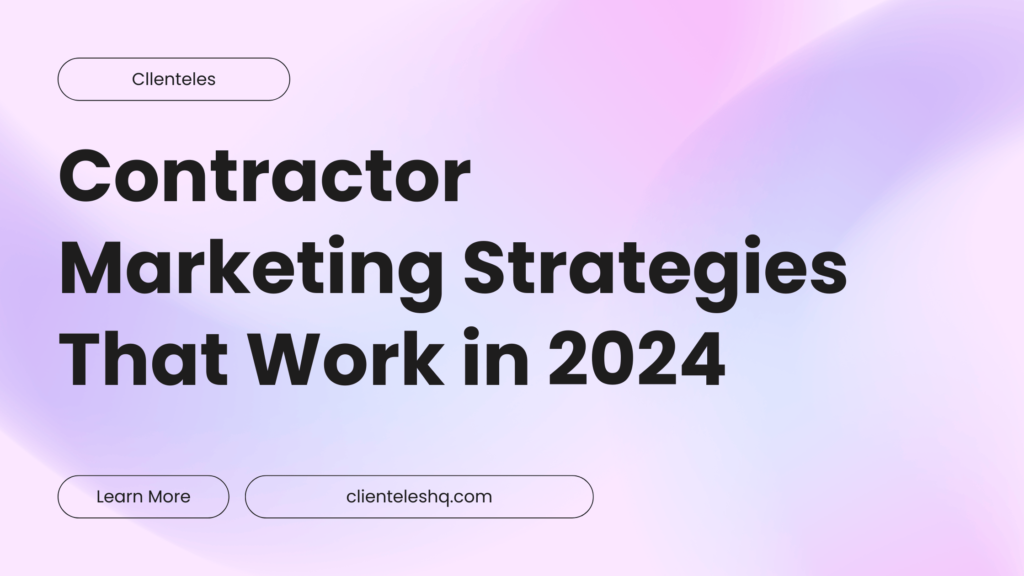How to Stand Out from the Competition in 2025 (Without Shouting)
In today’s noisy digital world, learning how to stand out from the competition is no longer optional ,it’s survival.
Most businesses today are trying their best to get noticed but do not know how to stand out from the competition . Some run Facebook ads. Others redesign their websites. A few even copy what their competitors are doing, hoping it works for them too.
But here’s the thing , being visible isn’t enough anymore. In fact, it’s just the price of entry.
To actually win in today’s crowded B2C world, your business has to be the obvious choice. Not just the one that shows up in search results or has flashy social media. You need to be the one people remember, trust, and confidently choose even if your price isn’t the lowest.
Look at brands like Glossier or Warby Parker. They didn’t dominate because they shouted louder. They won because they felt personal, clear, and different. Customers saw them and thought, “This is for me.”
That’s exactly what this guide will help you do.
We’re not here to talk about hacks, gimmicks, or chasing trends. Instead, we’ll break down simple but powerful strategies that will make your business stand out, connect more deeply, and bring in clients who stay, spend, and refer.
Know Your Competition Inside and Out
Most business owners think they know who they’re up against. They glance at a few Instagram profiles, maybe browse a competitor’s website, and call it a day. But surface-level scouting won’t cut it anymore not in 2025.
If you really want to stand out from the competition, you have to know them better than they know themselves.
Let’s break it down:
3 Types of Competitors You Need to Study
- 1. Direct Competitors
- These are the ones selling the same product or service as you, to the same audience. For example, if you run a mobile car wash, other mobile car washes in your area are direct competitors.
- 2. Indirect Competitors
- These solve the same problem, but in a different way. A YouTube tutorial on “how to deep clean your car at home” is an indirect competitor to a car wash service. It gives the customer another path.
- 3. Replacement Competitors
- These are DIY options, friends, or even doing nothing. If you’re a personal trainer, YouTube workouts and free fitness apps are replacement competitors.
- Knowing the difference helps you stop competing blindly — and start positioning smartly..
What to Look for When You Research
Once you identify the players, go deeper:
- Read customer reviews: What do people complain about?
- Browse their website: Is their message clear or confusing?
- Check their pricing: Are they charging more? Less? Why?
- Subscribe to their emails or follow them on socials: How do they sell? Are they aggressive or value-driven?
Pro Tip: Create a simple spreadsheet and log what each competitor does well, what they do poorly, and where you can be better.
Real Example
A local home cleaning business in Dallas noticed all its competitors had long wait times for bookings. Instead of competing on price, they built their brand around “Same-Day Cleanings Available.” That one shift made them the go-to for busy professionals and they grew 40% in one year.
It’s a simple move, but it worked because it helped them stand out from the competition in a way that mattered to customers.
Stand Out from the Competition with a Clear Value Proposition
Let’s be honest , most business websites sound like they were written by a robot with a marketing degree.
“We’re fast, friendly, and reliable.”
Okay… so is everyone else.
If you want to stand out from the competition, your value proposition , the one sentence that tells people why they should choose you has to do more than state the obvious. It needs to connect. It should make your ideal customer nod and say, “Finally, someone who gets it.”
What a Great Value Proposition Actually Does
It answers 4 unspoken questions in your customer’s head:
- Who is this for?
- What problem do they solve?
- Why are they different from the others?
- Can I trust that it works?
Framework: Build a Sticky Value Proposition in 4 Steps

Here’s a simple structure to guide you:
We help [specific audience] who struggle with [specific problem]. Our [product/service] delivers [unique solution or result], backed by [proof or experience].
Let’s plug that in with a real example:
Instead of this:
“We build websites for contractors.”
✅ Say this:
“We help home remodeling contractors who are tired of paying for leads that go nowhere. Our website system tripled one Texas builder’s inquiries in 60 days without running a single ad.”
Now that’s clear. It speaks directly to pain. It builds curiosity. And it shows results.
Real Life Example:
Basecamp, the project management tool, famously ran this line on their homepage:
“We don’t work on Fridays — and neither should you.”
That’s not a feature list. It’s a feeling. And it speaks straight to their ideal customer: overwhelmed small teams looking for more time, not more tools.
Brands like Shopify and Slack also excel here. They don’t try to say everything. They just say the one thing their audience cares most about.
B2C Example You Can Steal
Let’s say you run a local skincare brand. Which of these sounds better?
❌ “We offer high-quality, organic skincare.”
✅ “We help busy women with sensitive skin finally get clear, glowing results — with zero toxic ingredients or 10-step routines.”
See the difference? One is generic. The other is magnetic.
Build a Brand That Stands Out and Feels Real
Your brand isn’t your logo. It’s not your website colors or tagline either.
Your brand is how people feel when they think about you and that feeling starts forming long before you speak to them.
In a competitive B2C market, the businesses that consistently stand out from the competition are the ones that make people feel something: safety, clarity, inspiration, loyalty, even pride.
What Makes a Brand Stick Emotionally?
A strong brand does 3 things:
1. Looks Consistent
Your visuals from Instagram posts to invoices should feel like they all come from the same place. They should have the same colors. Same fonts. Same mood.
Example: Coca-Cola is instantly recognizable from a single red swoosh. You never wonder if a post came from them you know.
2. Sounds Consistent
The way you talk (a.k.a. your voice) should feel the same across every touchpoint: emails, ads, website, customer service.
Example: Wendy’s Twitter is bold and sassy. Apple is sleek and minimal. Both are distinct and that’s the point.
3. Stands for Something
People are drawn to brands that believe in something. Not necessarily politics , just purpose.
Example: Patagonia is more than outdoor gear. It’s a brand built on environmental activism. That’s why people pay more —and stick around.
Small Business Example
A local roofing company once picked bold red and black as their signature colors. They started using the same tone everywhere , honest, confident, no fluff. Then they came up with this tagline:
“No leaks. No lies.”
It was simple, but powerful. Homeowners trusted them more. People remembered them. Their referrals skyrocketed all because their brand felt like a safe bet.
Adapt Fast to Stay Relevant and Stand Out from Competitors
Change isn’t coming. It’s already here and it doesn’t wait for slow brands.
New tools means new customer expectations which further means new competitors. In a world where trends shift weekly and buying behavior evolves overnight, the businesses that consistently stand out from the competition are the ones who move quickly, test boldly, and adapt confidently.
Standing still? That’s the fastest way to be forgotten.
Why Adaptability Is a Superpower in 2025
Your customers don’t care about how long you’ve been in business if you’re out of touch with what they need now. And most companies fall behind because they wait too long to change.
Meanwhile, smarter businesses are doing this:
- Testing new offers before their competitors even hear about them
- Listening to real customer feedback not just assumptions
- Leveraging tech tools that cut down costs and speed up service
- Letting younger team members lead innovation (instead of micromanaging)
Example: Netflix didn’t beat Blockbuster by offering better VHS rentals. They adapted their model, killed off late fees, and eventually went fully digital before everyone else.
Same with Fenty Beauty, Rihanna’s brand exploded by addressing the lack of inclusive shade ranges in makeup before the big players caught on.
Small Business Example
A local painter in Atlanta noticed a trend: more customers were asking about non-toxic and eco-friendly paints. Instead of brushing it off, she launched a “Green Painting” option — and within a month, she was featured in a local eco blog. That one pivot helped her become the go-to choice for families with kids and allergies.
Adapting fast doesn’t always mean reinventing everything. Sometimes, it just means being the first to respond to what your customers are already asking for.
Quick Checklist: How to Stay Agile Without Losing Focus
- Block 2 hours a month to review customer questions and behavior
- Follow industry leaders or trend accounts (e.g. @futureparty or @trendwatching)
- Try one new idea per quarter — no pressure to perfect it, just test
- Involve younger or newer team members in brainstorming sessions
- Keep your “why” the same, but let your “how” evolve
Use Digital Marketing That Builds Trust Not Just Clicks
Most businesses treat marketing like a megaphone , the louder they shout, the more customers they hope to attract. But here’s the reality in 2025:
People don’t want more noise. They want to trust you.
The brands that consistently stand out from the competition are the ones that focus less on promotion and more on connection. And that’s where digital marketing comes in when it’s done right.
Whether you’re a local service business, an e-commerce brand, or a direct-to-consumer startup, your marketing shouldn’t just get attention. It should build trust before a single sale happens.
Good marketing doesn’t just bring in leads. It builds trust.
The Digital Channels That Actually Build Trust
- SEO Content: Blogging isn’t dead — it’s smarter. Your website should be answering the exact questions your ideal customer is Googling. If you solve their problem before they even contact you, you’ve already won their trust. A local HVAC company published a blog titled, “How to Choose the Right AC Size for Your Home in Lagos.” That one post now ranks on page one and drives more than 70% of their monthly leads. According to HubSpot, businesses that blog regularly generate 67% more leads per month than those that don’t.
2. Social Media
Skip the generic graphics. Show up with real, helpful content. That might mean:
- Quick how-to tips
- Customer transformations
- Behind-the-scenes videos
- Product demos or team highlights
Gymshark built its entire fitness empire not through traditional ads, but through relatable, community-driven content and influencer partnerships that actually felt human.
Focus on being useful. When people learn from you, they trust you.
3. Email Marketing
Your email list isn’t just a sales list. It’s a trust list. Send weekly or bi-weekly emails that offer something useful like insights, tools, behind-the-scenes stories, or customer wins.
Glossier is a great example. Their emails feel more like a note from a friend than a sales pitch. That tone keeps customers engaged even when they’re not buying.
4. Paid Ads That Show Proof
Skip the hype. Instead, run short video or photo-based ads that feature real customers talking about their experience. Testimonials are still one of the fastest ways to build credibility especially when they’re raw and unscripted.
What Not to Do
- Don’t publish blog posts just to check a box. Make them useful.
- Don’t post daily if you have nothing to say.
- Don’t run ads to a homepage that doesn’t convert. Every campaign needs a focused landing page.
Marketing today isn’t about broadcasting. It’s about earning trust one interaction at a time.
Make the Customer Experience Your Secret Weapon
People don’t always remember what you said. But they will remember how you made them feel.
And in today’s competitive B2C market, experience is everything. It’s the one thing your competitors can’t copy because it’s built into your operations, your tone, your follow-up, and your culture.
You don’t need a fancy loyalty program or a million-dollar CRM. What you need is a customer experience that feels smooth, thoughtful, and human from start to finish.
That alone can help your business stand out from the competition, even if your product or price is similar to others.
What a Memorable Experience Looks Like
1. Speed
In a world where Amazon delivers in 24 hours and Uber arrives in minutes, slow response times kill trust. Responding quickly even with just a “Got it, we’ll update you soon” shows that you value your customer’s time.
2. Simplicity
Customers shouldn’t need a PhD to book your service or understand your pricing. The easier your process is, the more likely they’ll stick around.
3. Gratitude
Small gestures go further than big marketing budgets. A simple handwritten thank-you note, a welcome email that feels personal, or a surprise discount for returning customers makes people feel appreciated.
4. Feedback Loops
Great brands listen by asking for feedback and showing that it mattered. If a customer points out a flaw and you fix it, you earn more than their loyalty and as a result you earn their advocacy.
Real-World Example
A remodeling contractor started sending a small welcome box to every new client. It included a thank-you note, a sample of dust-reducing wipes for during the remodel, and a branded measuring tape.
Simple, inexpensive, and unforgettable.
Within six months, that one gesture doubled their referrals. Why? Because people talked about the experience not just the service.
B2C Brand Benchmark
Zappos built its reputation on customer service. Not just shoes. They famously empowered their support reps to spend as long as needed on any customer call. Some calls lasted over an hour — not because of a complaint, but because of connection.
That level of care turns customers into brand evangelists. And in competitive industries, that’s marketing you can’t buy.
How to Audit Your Experience Today
- How fast do you reply to inquiries or issues?
- Is your booking or buying process clear and friction-free?
- Do customers ever get a personal touch and not just automated messages?
- Have you asked for feedback recently? What did you do with it?
Improving your customer experience doesn’t have to be expensive — it just has to be intentional.
Stand Out Faster by Building Smart Business Partnerships
Most business owners try to grow alone by grinding day after day, thinking if they just work harder or post more often, things will click as a result.
But some of the fastest-growing brands didn’t do it all on their own. They partnered their way to the top
Partnerships aren’t just a bonus strategy. They’re often the missing piece that helps you stand out from the competition, reach new audiences, and gain instant trust by association.
Done right, a good partnership becomes a growth multiplier and not just a handshake or a cross-promotion.
Types of Growth-Driven Partnerships You Can Create
1. Referral Partnerships
Partner with other businesses that serve your audience but don’t compete with you directly.
If you’re a wedding photographer, connect with local florists, DJs, or event planners. A referral from a trusted vendor is worth more than any paid ad.
2. Content Collaborations
Team up with complementary brands or creators to co-write blog posts, host webinars, or share newsletters. This positions both brands as experts while tapping into each other’s audience.
Think of how brands like Mailchimp and Shopify have partnered on guides, events, and tools each benefiting from the other’s reach.
3. Strategic Local Collabs
For service-based or retail businesses, team up on bundles, giveaways, or joint events.
A local roofer might partner with a gutter cleaner, while a hair salon could collaborate with a skincare brand for a “Spring Glow” package.
4. Mentorship and Knowledge Partnerships
Sometimes growth isn’t about leads ,rather it is about getting smarter. Build relationships with mentors or advisors who’ve done what you’re trying to do. Their insight could save you years of trial and error.
What Makes a Partnership Work
- Shared audience, different offer: You shouldn’t be fighting for the same sale.
- Equal value exchange: Both sides need to win.
- Clear expectations: Outline who does what and how results will be tracked.
- Mutual trust and alignment: Their brand reputation becomes tied to yours — and vice versa.

Small Business Example
A local dog groomer partnered with a pet photographer. Every grooming session included a 10% discount on a pet photo shoot. Not only did both businesses grow their client base, but the customer experience became more memorable and more shareable online.
That kind of smart collaboration helps you stand out from the competition without spending more on ads.
Track What Matters to Outperform the Competition
Here’s a harsh truth: many businesses are busy tracking the wrong numbers.
They’re glued to vanity metrics like followers, likes, views while ignoring what actually drives revenue and growth. If you want to stand out from the competition, then you need to focus on what really moves the needle.
Because you can’t improve what you don’t measure. But you also can’t grow if you’re measuring the wrong things.
What to Track (And Why It Matters)
The goal isn’t to measure everything rather it’s to measure what matters. Here’s what that looks like in a high-performing B2C business:
1. Number of Leads
How many real inquiries or sign-ups are you getting each month?
2. Conversion Rate
What percentage of those leads turn into paying customers?
3. Customer Experience Bottlenecks
Where are people dropping off — and why?
4. Time to Value
How quickly does a new customer start seeing results or feeling satisfied?
5. Retention and Referrals
How long do they stay with you? How often do they recommend you?
These numbers tell you more than likes ever could. They tell you if your business is healthy, scalable, and resonating.
Real Example
A small law firm tracked how many potential clients were booking consultations but noticed most dropped off midway through the quote process.
After reviewing feedback and testing different layouts, they redesigned the quote form to be shorter and mobile-friendly. The result? A 25% increase in booked appointments within a month.
They didn’t change their ads. They just fixed the friction.
Simple Tracking Framework You Can Use Monthly
| Metric | Why It Matters | What to Do If It Drops |
|---|---|---|
| Leads | Measures interest and visibility | Improve SEO, ads, or lead magnets |
| Conversion Rate | Measures effectiveness of your offer | Tweak copy, forms, follow-up emails |
| Time to First Result | Affects satisfaction and retention | Streamline onboarding or delivery |
| Referral Rate | Measures customer trust and loyalty | Enhance experience or ask for referrals |
Final Thoughts: Build a Business That Stands Out From Competition
You’re not just fighting to get noticed , you’re building something that deserves attention.
If there’s one takeaway from this guide, it’s this: to stand out from the competition, you don’t need to shout louder or slash your prices.
You need to become the obvious choice.
That means:
- Knowing your competition better than they know themselves
- Speaking to your audience with clarity and confidence
- Building a brand that people can feel not just see
- Adapting faster than others, so your business stays relevant
- Using digital marketing to teach, help, and build trust
- Creating an experience that customers want to tell others about
- Partnering with people and brands that help you grow
- Tracking what actually matters and fixing what doesn’t
No gimmicks. No tricks. Just strategy, honesty, and consistency.
This is how winning companies grow in 2025 and it’s exactly how your business can grow, too.
If you’re ready to become the business people remember, trust, and choose , let’s make it happen together.
Click here to get a custom marketing strategy that actually works
We’ll help you clarify your message, optimize your digital presence, and position your brand so well that standing out won’t be your problem , choosing the right customers will.


